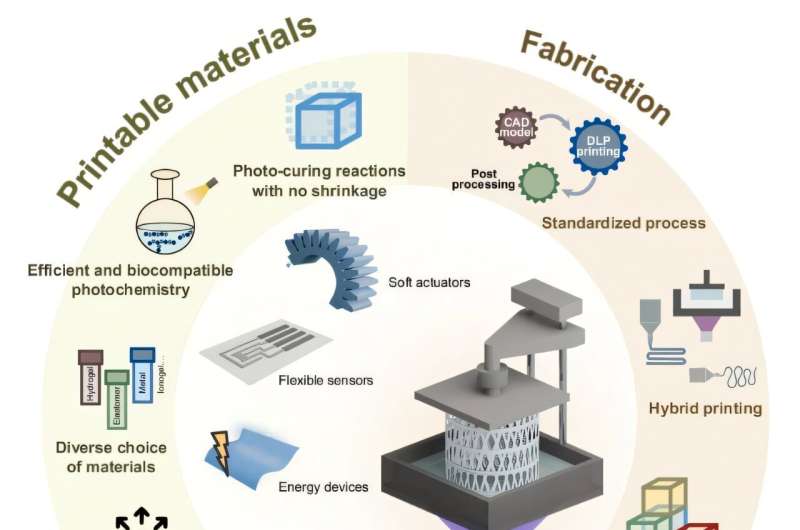
Digital light processing (DLP) 3D printing is reshaping the landscape of flexible electronics, offering precision, speed, and sustainability for next-gen health tech, robotics, and wearables.

Flexible devices are central to future innovations in health monitoring, soft robotics, and wearable electronics. However, traditional manufacturing techniques like casting and lithography are often too slow, expensive, and limited in handling complex, multifunctional designs. Compounding the issue, conventional materials such as rigid plastics and non-stretchable conductors reduce both comfort and longevity in these devices.
To meet the growing demand for smarter, more adaptable, and environmentally friendly devices, researchers are turning to digital light processing (DLP) 3D printing. With unmatched precision, speed, and material versatility, DLP is fast emerging as a key enabler of high-performance, flexible electronics.
A recent review in Microsystems & Nanoengineering by scientists from the University of Macau and Hong Kong University of Science and Technology highlights how DLP is redefining the field. The study explores cutting-edge advances in printed sensors, soft actuators, and energy systems made possible through innovations like grayscale control, multi-material printing, and new printable materials.
DLP offers print resolutions as fine as 1 μm, allowing for intricate structures like porous sensor arrays and compact energy harvesters. Breakthroughs in materials—such as self-healing hydrogels, liquid metals, and biodegradable elastomers—add new dimensions of durability, stretchability, and environmental sustainability.
Researchers have developed advanced devices like liquid crystal elastomer actuators and dome-shaped capacitive sensors with exceptional sensitivity by integrating DLP with other fabrication methods. In energy, 3D-printed triboelectric nanogenerators and supercapacitors push the limits of on-body energy solutions.With continued material development and production scaling, DLP-printed flexible devices are set to transform fields ranging from healthcare to robotics—combining innovation with sustainability.
“DLP is evolving from a prototyping tool into a foundational platform for next-generation electronics,” says Dr. Iek Man Lei. Dr. Liang Yue adds, “Its potential to enable personalized, eco-conscious smart systems is immense.”










